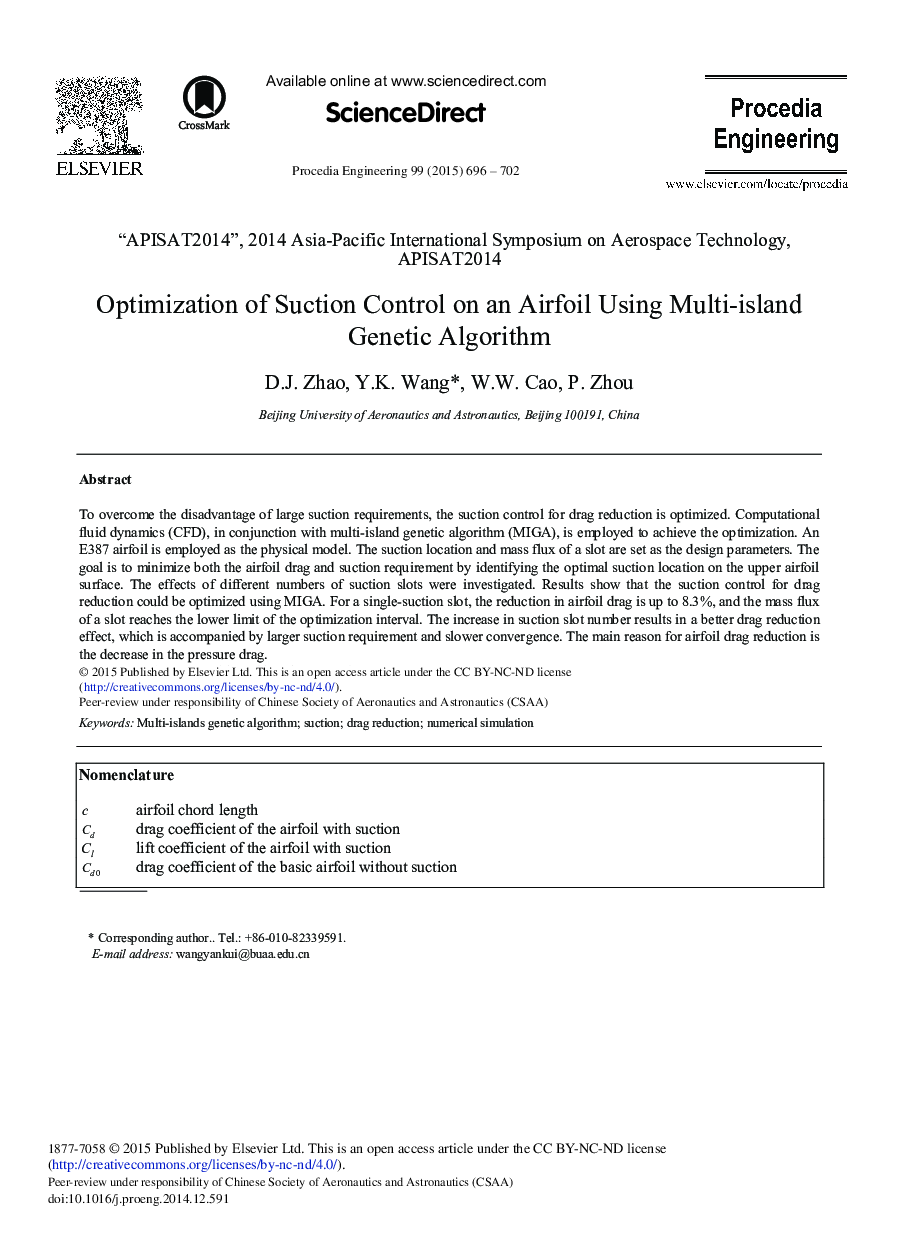| Article ID | Journal | Published Year | Pages | File Type |
|---|---|---|---|---|
| 857126 | Procedia Engineering | 2015 | 7 Pages |
To overcome the disadvantage of large suction requirements, the suction control for drag reduction is optimized. Computational fluid dynamics (CFD), in conjunction with multi-island genetic algorithm (MIGA), is employed to achieve the optimization. An E387 airfoil is employed as the physical model. The suction location and mass flux of a slot are set as the design parameters. The goal is to minimize both the airfoil drag and suction requirement by identifying the optimal suction location on the upper airfoil surface. The effects of different numbers of suction slots were investigated. Results show that the suction control for drag reduction could be optimized using MIGA. For a single-suction slot, the reduction in airfoil drag is up to 8.3%, and the mass flux of a slot reaches the lower limit of the optimization interval. The increase in suction slot number results in a better drag reduction effect, which is accompanied by larger suction requirement and slower convergence. The main reason for airfoil drag reduction is the decrease in the pressure drag.
